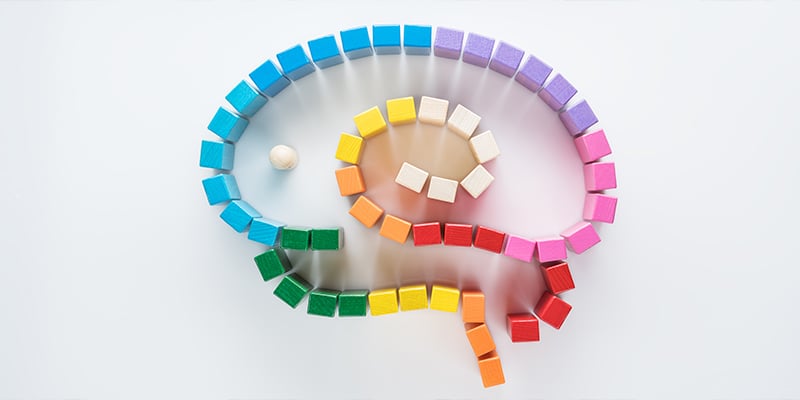
Too many of us whine, moan, and complain about the hardships in our lives. And with everything 2020 has delivered so far, there are a lot of hardships to go around. You may be feeling that life is unfair or that you’ve been dealt a raw deal. Like many people these days, you may be wallowing in frustration, anxiety, anger, or depression.
The buildup of emotions due to the pandemic could be squashing your motivation and leading to creative destruction. It’s not uncommon for people to feel so overwhelmed by their emotions that they have trouble getting their work done let alone doing it creatively.
For others, the swirling emotions could be fueling a creative explosion. In fact, it is through our toughest trials that our greatest creative gifts tend to emerge. Take it from rapper Kid Cudi, who revealed in an interview with People magazine that “anxiety and depression ruled my life for as long as I could remember.” He says it took him a while to learn that “we can take our pain and turn it into something. I turn my pain into music.”
How can you be like Kid Cudi and turn your pain into passion that fuels your creativity rather than kills it?
UNDERSTAND THE NEUROSCIENCE OF CREATIVITY
Science shows that creativity is linked to emotions, and it appears that negative emotions may be behind some of the world’s greatest art. A 2008 study in Personality & Social Psychology Bulletin found that compared with social approval, social rejection was associated with greater artistic creativity.
A 2016 study used brain imaging in Scientific Reports to measure activity in the brains of jazz musicians as they created music. The researchers found that when the musicians were asked to play in a way that conveyed a positive emotion, it deactivated an area of the brain called the dorsolateral prefrontal cortex, an area involved in planning and monitoring behavior. This has been interpreted as a neural signature of being in a “flow state” or “in the zone.”
When the same musicians were asked to convey a negative emotion, the deactivation in the DLPFC wasn’t as pronounced. However, the negative emotions activated the reward centers of the brain, which are tied to drive and motivation. Negative emotions may make you more driven to create.
The act of engaging in a creative endeavor can enhance moods and emotions, according to research in the American Journal of Public Health. Because of this, it’s a good idea to find ways to channel your negative emotions in a creative way.
CHANNEL YOUR NEGATIVE EMOTIONS CREATIVELY
Don’t think you have to be “artsy” or “crafty” to get creative. Creativity crosses all domains—even mathematicians, business leaders, and neuroscientists need to innovate in creative ways. Here are some ways to turn your painful emotions into power through creativity.
- Find a creative outlet you enjoy. Whether you like to write, create music, knit, do woodworking, or podcast from home, understand where you want to channel your emotions. When you feel anger, sadness, or stress building within you, reach for your notebook, guitar, or knitting needles. Make it a habit to express your emotions in a productive manner rather than letting them loop inside your head.
- Gain a sense of control. One reason why the pandemic is causing so much stress and anxiety is that it’s fraught with uncertainty. Expressing your emotions with a creative outlet is one way to gain some control over something in your life. You get to make the decisions about your project, whether it’s editing a video you made, creating a sewing pattern, or choosing what to paint. Feeling like you’re in the driver’s seat—even if it’s just for a short time or for a small project—can help calm anxiousness.
- Give yourself time to be creative. According to a 2016 study in Art Therapy: Journal of the American Art Therapy Association, spending 45 minutes making art significantly lowered cortisol levels. Instead of thinking of your creative hobbies as mere distractions that don’t deserve your time, recognize them for the physical and mental health benefits they provide and carve out time in your schedule for them.
ADD/ADHD, anxiety, depression, and other mental health issues can’t wait. During these uncertain times, your mental well-being is more important than ever and waiting until life gets back to “normal” is likely to make your symptoms worsen over time.
At Amen Clinics, we’re here for you. We offer in-clinic brain scanning and appointments, as well as mental telehealth, remote clinical evaluations, and video therapy for adults, children, and couples. Find out more by speaking to a specialist today at 888-288-9834. If all our specialists are busy helping others, you can also schedule a time to talk.





I have had a lot of emotional trauma throughout my life. I wasn’t diagnosed with bipolar disorder until I was twenty-seven. I have been an artistic person since I can remember and often my emotional pain has become a series of poems, or paintings, or very emotional journal entries. Expressing my pain through these creative outlets has helped me release my tortured thoughts into the universe and out of my head.
Comment by Heather Kuzio — August 10, 2020 @ 5:18 AM